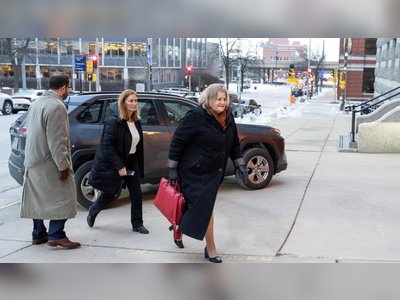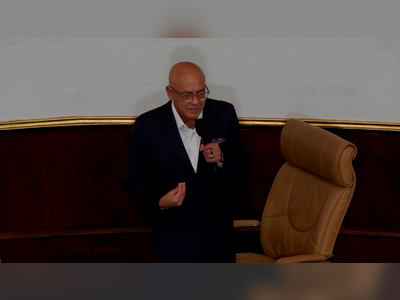
Serious Structural Deficiencies Identified in University of Costa Rica Buildings
An official report details hidden defects and design issues in four significant constructions, prompting legal actions.
A recent report from the University of Costa Rica's Office of University Comptroller has uncovered hidden defects and design problems in four buildings on campus.
These buildings include the Cyclotron Building, the School of Musical Arts Building, the Institute of Pharmaceutical Research Building (INIFAR), and the Classroom and Laboratory Building at the Atlantic Regional Headquarters.
All are part of the Institutional Improvement Program.
In light of the findings published in this document, the University Council has filed a complaint with the Attorney General's office.
According to the report, there are alleged irregularities related to the construction of these four structures, leading to further investigation.
The comptroller of the University of Costa Rica, Glenn Sittenfeld Johanning, has communicated that the construction processes are currently under review for potential irregularities as per the established regulations, and results will be duly reported to the relevant authorities.
The report, designated OCU-167-2025 and dated March 10, 2025, contains results from forensic audits and investigations regarding irregularities in university building construction.
It catalogs various previous communications issued in 2024 by the University Comptroller, detailing deficiencies in construction, design issues, a lack of safety features, electromechanical problems, and even repair costs paid by the university due to alleged failures in meeting contractor guarantees.
1. Cyclotron Building
The document OCU-R-188-2024, dated October 14, 2024, highlighted multiple issues in the Cyclotron Building, which serves critical diagnostics and treatment purposes, particularly for cancer and cardiovascular diseases.
The audit found hidden construction defects, deficiencies in planning and design, and inadequate supervision of the project.
Specific problems included evidence of moisture issues in the Cyclotron bunker, non-compliance with fire safety norms, and deficiencies in the delivery of 'as-built' plans.
Moreover, it was noted that the project did not undergo a sufficiently rigorous inspection process upon completion, which prevented compliance with contractual specifications and norms.
A lack of proper documentation control further complicated tracking decision-making and accountability.
Following this, two University employees were detained as part of investigations into forgery related to the acceptance of contracted goods and services.
2. School of Musical Arts Building
In the report OCU-R-208-2024, dated November 1, 2024, significant operational issues and hidden defects were reported in the new School of Musical Arts Building.
Problems identified included water leaks due to insufficient waterproofing, detached wall coatings due to poor material application, and defects in doors and windows that compromised safety.
It was also revealed that architectural design flaws persisted, such as the inappropriate installation of floor-level sliding windows and the absence of safety railings on the roof, increasing accident risks.
The findings recommended stricter controls on bidding contracts to clearly establish warranty periods and contractor responsibilities regarding structural defects.
3. INIFAR Building
According to OCU-R-117-2024, dated July 3, 2024, several deficiencies in construction and design were reported for the INIFAR Building.
Identified issues included hidden defects, design problems, and evolving project requirements during execution.
Another report dated December 16, 2024, further explored electromechanical operation problems, revealing significant errors in electrical construction plans.
Problems included incorrectly sized grounding conductors, incompatible electrical protections, omitted essential requirements in the machinery room, and the absence of a necessary distilled water system for autoclaves.
4. Classroom and Laboratory Building, Atlantic Regional Headquarters
The audit report OCU-R-243-2024, dated December 5, 2024, identified significant hidden defects and flaws in design planning for the Classroom and Laboratory Building.
Notable findings were water leaks in various sections, including laboratories, attributed to poor roof and wall waterproofing.
The audit statement indicated that the construction company, Soluciones Arquitectónicas y Construcción SICSA S.A., was responsible for addressing these hidden defects within a five-year period but had not executed necessary repairs, leading the university to incur additional costs to mitigate damage.
In light of these discoveries, recommendations included considering legal actions against the construction company to enforce compliance with warranty obligations before the end of the guarantee period.
Additionally, security flaws were identified, such as inadequate locking mechanisms in laboratories and classrooms that could increase unauthorized access risks.
The investigation into electrical engineering problems also raised concerns, including over-scaled protections compared to conductors and issues related to voltage fluctuations linked to poor network design, reflecting insufficient technical oversight during construction.
These buildings include the Cyclotron Building, the School of Musical Arts Building, the Institute of Pharmaceutical Research Building (INIFAR), and the Classroom and Laboratory Building at the Atlantic Regional Headquarters.
All are part of the Institutional Improvement Program.
In light of the findings published in this document, the University Council has filed a complaint with the Attorney General's office.
According to the report, there are alleged irregularities related to the construction of these four structures, leading to further investigation.
The comptroller of the University of Costa Rica, Glenn Sittenfeld Johanning, has communicated that the construction processes are currently under review for potential irregularities as per the established regulations, and results will be duly reported to the relevant authorities.
The report, designated OCU-167-2025 and dated March 10, 2025, contains results from forensic audits and investigations regarding irregularities in university building construction.
It catalogs various previous communications issued in 2024 by the University Comptroller, detailing deficiencies in construction, design issues, a lack of safety features, electromechanical problems, and even repair costs paid by the university due to alleged failures in meeting contractor guarantees.
1. Cyclotron Building
The document OCU-R-188-2024, dated October 14, 2024, highlighted multiple issues in the Cyclotron Building, which serves critical diagnostics and treatment purposes, particularly for cancer and cardiovascular diseases.
The audit found hidden construction defects, deficiencies in planning and design, and inadequate supervision of the project.
Specific problems included evidence of moisture issues in the Cyclotron bunker, non-compliance with fire safety norms, and deficiencies in the delivery of 'as-built' plans.
Moreover, it was noted that the project did not undergo a sufficiently rigorous inspection process upon completion, which prevented compliance with contractual specifications and norms.
A lack of proper documentation control further complicated tracking decision-making and accountability.
Following this, two University employees were detained as part of investigations into forgery related to the acceptance of contracted goods and services.
2. School of Musical Arts Building
In the report OCU-R-208-2024, dated November 1, 2024, significant operational issues and hidden defects were reported in the new School of Musical Arts Building.
Problems identified included water leaks due to insufficient waterproofing, detached wall coatings due to poor material application, and defects in doors and windows that compromised safety.
It was also revealed that architectural design flaws persisted, such as the inappropriate installation of floor-level sliding windows and the absence of safety railings on the roof, increasing accident risks.
The findings recommended stricter controls on bidding contracts to clearly establish warranty periods and contractor responsibilities regarding structural defects.
3. INIFAR Building
According to OCU-R-117-2024, dated July 3, 2024, several deficiencies in construction and design were reported for the INIFAR Building.
Identified issues included hidden defects, design problems, and evolving project requirements during execution.
Another report dated December 16, 2024, further explored electromechanical operation problems, revealing significant errors in electrical construction plans.
Problems included incorrectly sized grounding conductors, incompatible electrical protections, omitted essential requirements in the machinery room, and the absence of a necessary distilled water system for autoclaves.
4. Classroom and Laboratory Building, Atlantic Regional Headquarters
The audit report OCU-R-243-2024, dated December 5, 2024, identified significant hidden defects and flaws in design planning for the Classroom and Laboratory Building.
Notable findings were water leaks in various sections, including laboratories, attributed to poor roof and wall waterproofing.
The audit statement indicated that the construction company, Soluciones Arquitectónicas y Construcción SICSA S.A., was responsible for addressing these hidden defects within a five-year period but had not executed necessary repairs, leading the university to incur additional costs to mitigate damage.
In light of these discoveries, recommendations included considering legal actions against the construction company to enforce compliance with warranty obligations before the end of the guarantee period.
Additionally, security flaws were identified, such as inadequate locking mechanisms in laboratories and classrooms that could increase unauthorized access risks.
The investigation into electrical engineering problems also raised concerns, including over-scaled protections compared to conductors and issues related to voltage fluctuations linked to poor network design, reflecting insufficient technical oversight during construction.










